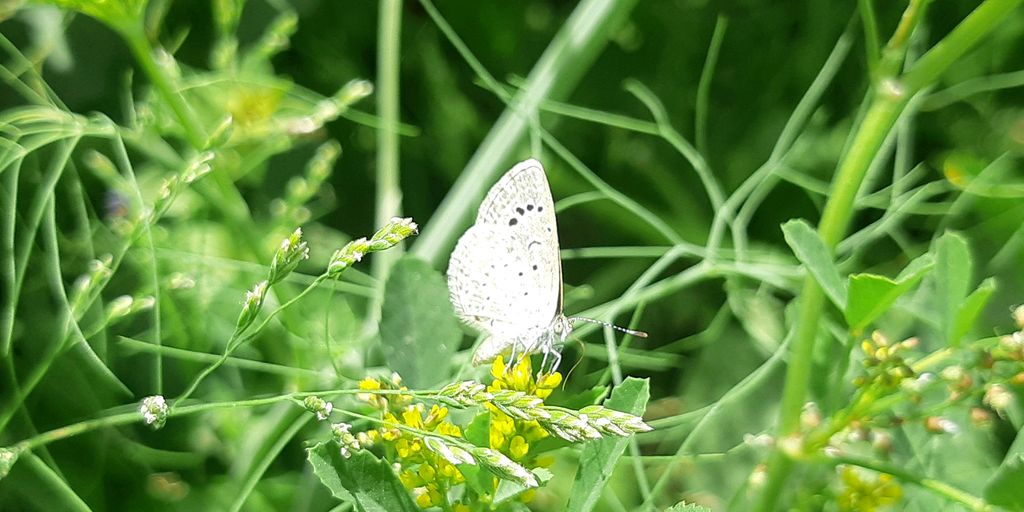Animals
Biodiversity Conservation Strategies: Protecting Our Planet’s Ecosystems

Biodiversity is essential for the health of our planet, influencing everything from our food systems to climate stability. As we face increasing environmental challenges, it is crucial to understand and implement effective strategies for biodiversity conservation. This article explores the importance of these strategies, the threats to biodiversity, and the roles of various stakeholders in protecting our ecosystems.
Key Takeaways
- Biodiversity is vital for ecosystem health and human survival.
- Habitat loss and climate change are major threats to biodiversity.
- Indigenous communities play a key role in conservation through traditional knowledge.
- Ex situ conservation methods, like breeding endangered species, are important but should complement in situ efforts.
- Community involvement and corporate responsibility are essential for effective biodiversity conservation.
The Importance of Biodiversity Conservation Strategies

Biodiversity is essential for a healthy planet. It refers to the variety of life on Earth, including different species of plants, animals, and microorganisms. Biodiversity conservation efforts are essential in maintaining functioning ecosystems, a steady food supply, and the multiple other benefits including economic stability and cultural richness.
Understanding Biodiversity and Its Benefits
Biodiversity provides numerous advantages:
- Food Security: A diverse range of species ensures a stable food supply. When biodiversity is high, crops and livestock are less vulnerable to diseases and pests.
- Medicinal Resources: Many medicines are derived from plants and animals, making biodiversity crucial for healthcare.
- Cultural Significance: Different cultures rely on various species for their traditions and practises, highlighting the importance of preserving biodiversity.
The Role of Biodiversity in Ecosystem Resilience
Ecosystems with high biodiversity are more resilient to changes and disturbances. They can recover more quickly from disasters like floods or fires. This resilience is vital for maintaining the balance of our environment and supporting human life.
Economic and Social Impacts of Biodiversity Loss
The decline in biodiversity can lead to significant economic and social challenges:
- Loss of Livelihoods: Many communities depend on natural resources for their income. Biodiversity loss can threaten these livelihoods.
- Increased Costs: As species decline, the costs of food and resources may rise, affecting everyone.
- Health Risks: Reduced biodiversity can lead to a decrease in the availability of medicinal resources, impacting public health.
Protecting biodiversity is not just about saving species; it’s about ensuring a sustainable future for all living beings on our planet.
Threats to Global Biodiversity
Biodiversity is facing numerous threats, primarily due to human activities. Habitat destruction is one of the most significant issues, as it leads to the loss of homes for countless species. Here are some of the main threats:
Habitat Destruction and Fragmentation
- Urban development and agriculture are major contributors to habitat loss.
- Deforestation for timber and land conversion reduces available habitats.
- Fragmentation isolates species, making it harder for them to find mates and food.
Climate Change and Its Effects
- Climate change alters habitats, forcing species to migrate or adapt.
- Increased temperatures and extreme weather events threaten many ecosystems.
- Approximately one million species are at risk of extinction, highlighting the urgency of the situation.
Pollution and Overexploitation
- Pollution from industrial waste and plastics severely impacts wildlife.
- Overfishing and hunting lead to the decline of various species.
- Toxic chemicals in the environment disrupt ecosystems and food chains.
The loss of biodiversity is not just an environmental issue; it affects our economy, health, and well-being. We must act now to protect our planet’s ecosystems.
Incorporating Biodiversity into ESG Frameworks
Assessment and Measurement of Biodiversity Impact
To effectively integrate biodiversity into Environmental, Social, and Governance (ESG) frameworks, companies must first assess their impact on biodiversity. This involves:
- Conducting biodiversity audits to understand the effects of operations.
- Using tools like the Natural Capital Protocol to quantify ecosystem services.
- Setting measurable goals based on the biodiversity footprint.
Understanding a company’s biodiversity impact is essential for tracking progress.
Partnerships and Collaboration for Conservation
Biodiversity conservation is a global challenge that requires teamwork. Companies can:
- Partner with conservation organisations to support habitat restoration.
- Collaborate with local communities for sustainable practises.
- Join industry initiatives like the Taskforce on Nature-related Financial Disclosures (TNFD).
These partnerships can help align business practises with global conservation efforts.
Sustainable Land Use and Resource Management
Companies should adopt sustainable practises to protect ecosystems. This includes:
- Implementing regenerative farming techniques in agriculture.
- Committing to zero deforestation in forestry.
- Prioritising biodiversity-friendly materials in sourcing policies.
By focusing on sustainable land use, businesses can reduce their negative impacts on biodiversity.
Protecting biodiversity is not just about wildlife; it’s about ensuring the health of ecosystems that support life and economic activity.
The Role of Indigenous Communities in Biodiversity Conservation
Traditional Knowledge and Practises
Indigenous communities have a deep connection to their lands, which has been built over thousands of years. Their traditional knowledge includes:
- Sustainable land management techniques
- Understanding of local ecosystems
- Practises that promote biodiversity
These methods often lead to healthier ecosystems and can be crucial in conservation efforts.
Successful Indigenous-Led Conservation Initiatives
Indigenous peoples have led many successful conservation projects. Some notable examples include:
- Protecting the Amazon rainforest from deforestation.
- Restoring coral reefs in the Pacific through community-led initiatives.
- Establishing protected areas that preserve wildlife habitats.
These initiatives show how effective Indigenous leadership can be in conserving biodiversity.
Challenges Faced by Indigenous Communities
Despite their vital role, Indigenous communities face numerous challenges, such as:
- Land rights issues and encroachment by corporations.
- Climate change impacts on their traditional ways of life.
- Lack of recognition and support from governments.
Indigenous peoples play an indisputable and critical role in the conservation of the planet’s biodiversity. Their efforts are essential for maintaining the health of our ecosystems and ensuring a sustainable future for all.
Ex Situ Conservation: A Complementary Approach
Breeding Endangered Species in Captivity
Ex situ conservation refers to the practise of preserving an endangered species outside of its natural habitat. This method is often used when species are on the brink of extinction. Here are some key points about this approach:
- Controlled environments: Species are bred in facilities like zoos or aquariums.
- Genetic diversity: Efforts are made to maintain a healthy gene pool.
- Reintroduction: Once populations are stable, species can be returned to their natural habitats.
Botanical Gardens and Seed Banks
Botanical gardens and seed banks play a crucial role in ex situ conservation. They help preserve plant species that are threatened or endangered. Here’s how they contribute:
- Living collections: Gardens maintain living plants for education and research.
- Seed preservation: Seed banks store seeds for future planting and research.
- Research opportunities: They provide a space for scientists to study plant species and their needs.
| Type of Facility | Purpose | Example |
|---|---|---|
| Zoos | Breeding endangered animals | San Diego Zoo |
| Aquariums | Preserving aquatic species | Monterey Bay Aquarium |
| Botanical Gardens | Education and research on plants | Kew Gardens |
| Seed Banks | Storing seeds for future use | Millennium Seed Bank |
Case Studies of Successful Ex Situ Conservation
Several successful ex situ conservation projects have shown the effectiveness of this approach:
- California Condor: Once nearly extinct, breeding programmes have helped increase their numbers.
- Arabian Oryx: Captive breeding led to their reintroduction into the wild.
- Golden Toad: Although extinct in the wild, research continues in captivity to understand its needs.
Ex situ conservation is a vital tool in the fight against biodiversity loss. It complements in situ efforts by providing a safety net for species that are struggling in their natural habitats. By combining both methods, we can enhance the chances of survival for many species.
Community Involvement in Biodiversity Conservation
Local Conservation Projects
Community involvement is crucial for biodiversity conservation. Local projects can make a significant impact. Here are some ways communities can engage:
- Organise clean-up drives to remove litter from natural habitats.
- Create community gardens that support local wildlife and promote native plants.
- Participate in tree planting events to restore local ecosystems.
Educational Programmes and Awareness Campaigns
Education plays a vital role in fostering a conservation mindset. Effective programmes can include:
- Workshops on local biodiversity and its importance.
- School programmes that teach children about ecosystems.
- Public awareness campaigns using social media to spread the word about conservation efforts.
Citizen Science and Volunteer Opportunities
Engaging the community in scientific research can enhance conservation efforts. Here are some examples:
- Bird watching events where participants record sightings to help track species.
- Invasive species removal days where volunteers help manage local flora.
- Wildlife monitoring projects that involve the community in data collection.
Community action is essential for protecting our planet’s ecosystems. By working together, we can create a lasting impact on biodiversity conservation.
In summary, community involvement is a powerful tool in the fight against biodiversity loss. By participating in local projects, educational initiatives, and citizen science, individuals can contribute to the health of our ecosystems. Together, we can make a difference!
Corporate Responsibility and Biodiversity
The Business Case for Biodiversity Conservation
In today’s world, biodiversity conservation is not just an ethical choice; it’s a smart business strategy. Companies that actively protect biodiversity can benefit in several ways:
- Regulatory Compliance: Many governments are introducing laws to protect biodiversity. Companies that follow these rules can avoid fines and improve their reputation.
- Investor and Consumer Demand: More investors and consumers want to support businesses that care about the environment. Companies that show commitment to biodiversity can attract more customers and investors.
- Supply Chain Resilience: Healthy ecosystems provide essential services like clean water and fertile soil. By protecting biodiversity, companies can ensure their supply chains remain stable and sustainable.
Sustainable Sourcing and Supply Chain Management
To effectively manage biodiversity, companies should focus on sustainable sourcing. This includes:
- Choosing suppliers that follow eco-friendly practises.
- Using materials that are sourced responsibly to protect wildlife and habitats.
- Implementing practises that reduce waste and pollution in the supply chain.
Transparency and Reporting in ESG
Transparency is key in building trust with investors and consumers. Companies should:
- Include biodiversity metrics in their ESG reports.
- Share their goals and progress in protecting biodiversity.
- Be open about their challenges and how they plan to overcome them.
Protecting biodiversity is essential for the health of our planet and the future of business. Companies that take action now will be better prepared for the challenges ahead.
Conclusion
Incorporating biodiversity into corporate responsibility is not just about compliance; it’s about creating a sustainable future for everyone. By prioritising biodiversity, companies can enhance their reputation, attract investment, and ensure long-term success.
Technological Innovations in Biodiversity Conservation
Remote Sensing and Monitoring
Technological advancements have made it easier to harness technology to safeguard biodiversity. Remote sensing allows scientists to monitor ecosystems from afar, providing valuable data on habitat changes and species distributions. This technology can help in:
- Tracking deforestation rates
- Monitoring wildlife populations
- Assessing the health of ecosystems
Genetic Research and Biotechnology
Genetic monitoring, such as environmental DNA (eDNA) analysis, is revolutionising how we study biodiversity. This method allows researchers to detect species presence in an area without needing to see them directly. Key benefits include:
- Non-invasive sampling
- Early detection of invasive species
- Monitoring of endangered species
Digital Platforms for Conservation Collaboration
Digital platforms are facilitating collaboration among conservationists, researchers, and the public. These platforms enable:
- Sharing of data and resources
- Crowdsourcing of conservation efforts
- Increased public engagement in biodiversity issues
The integration of technology in conservation efforts is not just a trend; it is a necessity for the future of our planet. By leveraging these innovations, we can make significant strides in protecting our ecosystems and the diverse life they support.
Policy and Legislative Measures for Biodiversity Protection
International Agreements and Conventions
Countries around the world have come together to create international agreements aimed at protecting biodiversity. Some key agreements include:
- Convention on Biological Diversity (CBD): Aims to conserve biodiversity, promote sustainable use, and ensure fair sharing of benefits.
- CITES (Convention on International Trade in Endangered Species): Regulates international trade of endangered species to prevent their extinction.
- Ramsar Convention: Focuses on the conservation of wetlands, which are vital for many species.
National and Local Legislation
At the national level, laws play a crucial role in protecting biodiversity. Here are some important measures:
- Endangered Species Act (ESA): Protects at-risk species and their habitats in the United States.
- Clean Air and Water Acts: Ensure that air and water quality is maintained, benefiting both humans and wildlife.
- Local Conservation Laws: Many regions have specific laws to protect local ecosystems and species.
Advocacy and Policy Reform
Advocacy is essential for effective biodiversity protection. Here are some actions that can be taken:
- Support for conservation laws: Encourage leaders to back laws that protect biodiversity.
- Community engagement: Involve local communities in conservation efforts to ensure their needs are met.
- Transparency in policy-making: Demand clear communication about how policies affect biodiversity.
Protecting biodiversity requires strong policies and active participation from all levels of society. Together, we can make a difference.
| Measure | Description |
|---|---|
| International Agreements | Global efforts to protect biodiversity |
| National Legislation | Laws that safeguard species and habitats |
| Advocacy | Community and individual actions to influence policy |
Restoration and Rewilding Efforts
Restoring Degraded Ecosystems
Restoration of ecosystems is crucial for reviving biodiversity. This involves:
- Replanting native species to restore habitats.
- Removing invasive species that threaten local flora and fauna.
- Rehabilitating soil to support plant growth.
Rewilding Projects and Their Impact
Rewilding aims to restore natural processes and expand European protected areas through rewilding. This approach:
- Reintroduces key species to restore trophic interactions.
- Fosters self-regulating ecosystems that can thrive independently.
- Enhances biodiversity by creating more resilient habitats.
Long-Term Monitoring and Maintenance
To ensure the success of restoration efforts, ongoing monitoring is essential. This includes:
- Regular assessments of ecosystem health.
- Engaging local communities in conservation efforts.
- Adapting strategies based on observed outcomes.
Effective restoration requires collaboration among scientists, local communities, and policymakers to create sustainable ecosystems for future generations.
The Future of Biodiversity Conservation

Emerging Trends and Strategies
The future of biodiversity conservation is bright, with new strategies emerging to tackle the challenges we face. Here are some key trends:
- Community Engagement: Involving local communities in conservation efforts is crucial. Their knowledge and commitment can lead to more effective outcomes.
- Technological Advancements: Innovations like remote sensing and genetic research are helping us monitor and protect biodiversity more efficiently.
- Policy Integration: Governments are increasingly recognising the importance of biodiversity in their policies, leading to better protection measures.
The Role of Youth and Future Generations
Young people are becoming vital in the fight for biodiversity. They are:
- Advocating for Change: Many youth-led movements are raising awareness about biodiversity loss.
- Innovating Solutions: Young minds are developing creative solutions to conservation challenges.
- Building Networks: They are connecting with global organisations to amplify their impact.
Global Cooperation and Shared Responsibility
To protect our planet, we must work together. This includes:
- International Agreements: Countries need to commit to global treaties that protect biodiversity.
- Shared Resources: Collaborating on research and conservation projects can lead to better results.
- Public Awareness Campaigns: Educating the public about biodiversity is essential for fostering a culture of conservation.
The future of biodiversity conservation relies on our collective efforts. By working together, we can ensure a healthier planet for generations to come.
In conclusion, the path forward involves embracing new strategies, engaging youth, and fostering global cooperation. By prioritising these areas, we can make significant strides in protecting our planet’s ecosystems.
Conclusion
In conclusion, as our world grapples with serious environmental issues, the importance of protecting biodiversity has never been clearer. Conserving biodiversity goes beyond just saving animals and plants; it is essential for maintaining the health of ecosystems that support all life, including our economies. For businesses, including biodiversity efforts in their strategies can lead to better compliance with regulations, stronger supply chains, and increased appeal to investors, all while ensuring a sustainable future. By taking action now, companies can play a vital role in safeguarding our planet’s ecosystems for the generations to come, while also securing their own success.
-

 Press Release4 days ago
Press Release4 days agoClinical Trials Market Set for Robust Growth, Driven by Drug Development Surge and Digital Innovation
-

 Press Release5 days ago
Press Release5 days agoFill-Finish Pharmaceutical Contract Manufacturing Market Expected to Flourish Amid Biopharmaceutical Boom and Global Outsourcing Trend by 2035
-

 Business6 days ago
Business6 days agoHow Managed IT Solutions Help Small Teams Compete at Enterprise Scale
-

 Press Release5 days ago
Press Release5 days agoGreen Bio Chemicals Market Poised for Sustainable Growth amidst Global Shift to Eco-Friendly Alternatives by 2035
-

 Press Release5 days ago
Press Release5 days agoIndustrial Boiler Market Expected to Surpass USD 24.4 Billion by 2035 Amid Growing Demand for Energy Efficiency and Industrialization
-

 Press Release5 days ago
Press Release5 days agoPreventive Vaccines Market to Witness Strong Growth by 2035
-

 Press Release5 days ago
Press Release5 days agoPet Food Nutraceutical Market Set for Robust Expansion Amid Rising Demand for Pet Wellness by 2035
-

 Press Release4 days ago
Press Release4 days agoWaterproof Structural Adhesives Market: A Comprehensive Study Towards USD 10.3 Billion in 2035










